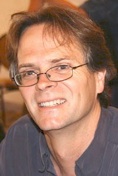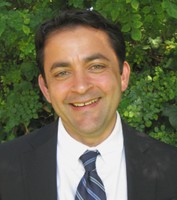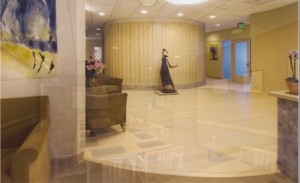Leslie’s Holiday Gift Guide
While theoretically fun, in reality, shopping for holiday gifts can be more stressful than a root canal. And you don’t get any Percocet afterward, or even a balloon.
Shopping is so painful that, come December, many newspapers and magazines publish gift guides to “help you out.” These gushing depictions of thingamabobs and doodads aren’t just there as an excuse to obliterate the line between advertising and legitimate content so that the sales staff can take the last two weeks of the year off. They’re also published so that the writers can score free samples and cross a few names off their own shopping lists, while still affording their weekly latte allotments.
In the interest of perpetuating this fine journalistic tradition, here is my first annual holiday gift guide of groovy things you can buy without ever leaving the comfort of your own home. (Note to stores: if you send me free stuff I’ll do a sequel for Martin Luther King Day, a vastly under-gifted holiday in my humble opinion)
For your wandering nephew–who really should be sedated whenever you’re forced to take him to a crowded public place–buy a Missing Milk Carton Costume (www.prankplace.com). His cute little face sticks out of the label, and his relevant contact information is printed right on the carton.
Your workout buddy would probably appreciate a waistband stretcher (www.carolwrightgifts.com). This ingenious device allows you to stay a size six through the holiday pig out extravaganza by simply stretching the waistband of your jeans. Diet schmiet!
The office Secret Santa Torturama will be lot less nightmarish this year when you gift your coworkers with a fine collection of abusive office rubber stamps (www.prankplace.com), allowing them to stamp those annoying expense reports in triplicate with sayings such as, “This is F**KING URGENT,” “Staple this to your FACE,” “Confidential – read this and I’ll have to kill you,” “File under T for TRASH,” and “Complete and Utter BULLSHIT.”
Overachieving teenage relatives can multi-task with the SAT Math Shower Curtain (www.alwaysbrilliant.com), which has test questions printed right there. No calculators allowed.
Teenage relatives who aren’t on the college track will enjoy the Crime Scene Towel, (www.baronbob.com) which holds their place at the pool with its classic chalk outline of a victim.
Your brother-in-law will be surprised and delighted by a stylish 100% silk “Ties Suck” Tie (www.thinkgeek.com), featuring a repeating binary pattern that, when translated into ASCII, reads: “ties suck.”
Your geeky brother will totally dig the Wi-Fi Detector Shirt (www.thinkgeek.com), which displays the current wi-fi signal strength to admirers as far as the eye can see. Talk about a chick magnet. You may have a new sister-in-law before the year’s end if he wears this baby.
Coffee addicts will appreciate a shot of Caffeine Soap (www.lazyboneuk.com). Who says they’re not a morning person? Lather up in the morning to a dose of 200 milligrams per shower/serving, which should provide just enough perk to hold off the a.m. demons until they can make their way to Starbucks.
I’ve found the one-size-fits-all perfect hostess gift for holiday gatherings: Pick Your Nose Party Cups (www.perpetualkid.com).
A new spin on the traditional party cup, each goblet comes with printed nose on it so that guests can pick their own nose for an evening of fun. Great stuff like this is why Santa invented the Internet. You’d be smart to stock up.
Your favorite artists will enjoy creating with Chew-By-Numbers Gumball Art (www.perpetualkid.com). No need to worry about mastering a paintbrush or pastels, all they’ll need are their chompers to provide the tools for this wadded-up gum masterpiece. I’m pretty sure this is how Jackson Pollock did it.
Your uncle the lush (and the bouncers at the County Bowl) will appreciate the Barnoculars Binocular Flask (www.after5catalog.com), a double-chambered liquor flask disguised as binoculars. Don’t confuse them with your actual binoculars–let me tell you, it burns.
Those endless soccer games will be a lot more bearable for moms and dads with a Cell Phone Flask (www.after5catalog.com), which looks just like a mobile phone but instead of a charge, holds their favorite adult beverage. Ditto with the don’t confuse them advice.
If you’re feeling really generous, your favorite columnist would kvell to receive a His & Hers Double Portrait in Chocolate by Vik Muniz (www.neimanmarcus.com), featured in the Neiman Marcus Christmas Catalog. For a mere $110,000, the Brazilian artist will capture your likenesses in a double helping of Bosco® chocolate syrup and you’ll come away with a one-of-a-kind framed museum-quality photographic work of art.
As long as we’re dreaming big, I wouldn’t mind reserving my spot on the Virgin Galactic Charter to Space (www.neimanmarcus.com). Boarding begins in 2009 for this ultimate getaway, which is now being “planned, designed, tested, and executed down to the last detail to ensure its safety and success.” The $1,764,000 price tag includes a six-passenger charter, so you’d better send me some nice Hanukah gifts if you want to make my top five friends list.
== When she’s not succumbing to her, “one for me, one for you” holiday shopping survival strategy, Leslie can be reached at Leslie@LeslieDinaberg.com. For more columns visit www.LeslieDinaberg.com.
Originally appeared in the Santa Barbara Daily Sound on November 30, 2007.










